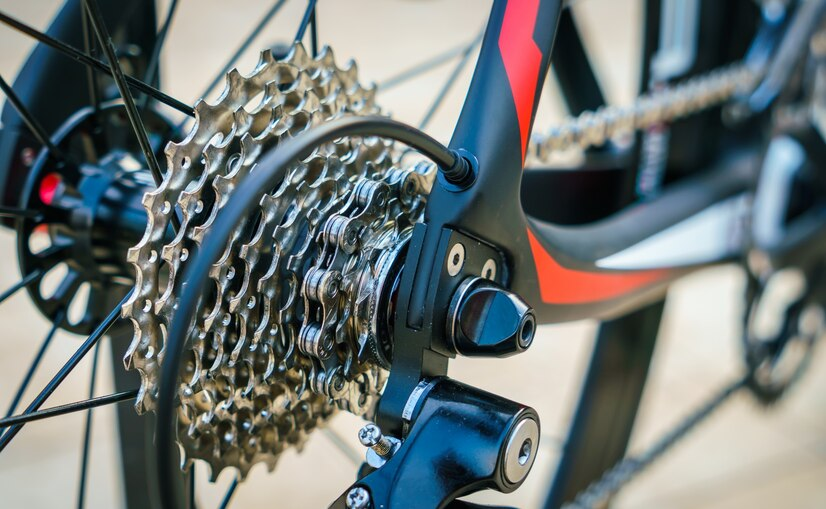Knowing how to use your bike gears efficiently is a key skill that can improve your cycling experience. Understanding how to use bike gears can make a major difference in your performance and enjoyment, whether you’re approaching steep inclines, riding on level terrain, or pushing over hard trails.
Each gear shift, whether front or back offers a unique approach to bike efficiency. In this detailed tutorial, we’ll look into the components of the gearing system, the simple process of using bike gears, analyze the operations of various shifter types, and practical tips for smooth shifts.
Let’s get you all set to go on a two-wheeled adventure with greater control, speed, and comfort.
Why Do I Need to Shift Gears?
Shifting gears on a bike is essential for improving pedal efficiency while ensuring a comfortable riding experience. Gears let you adjust to different terrains and situations.
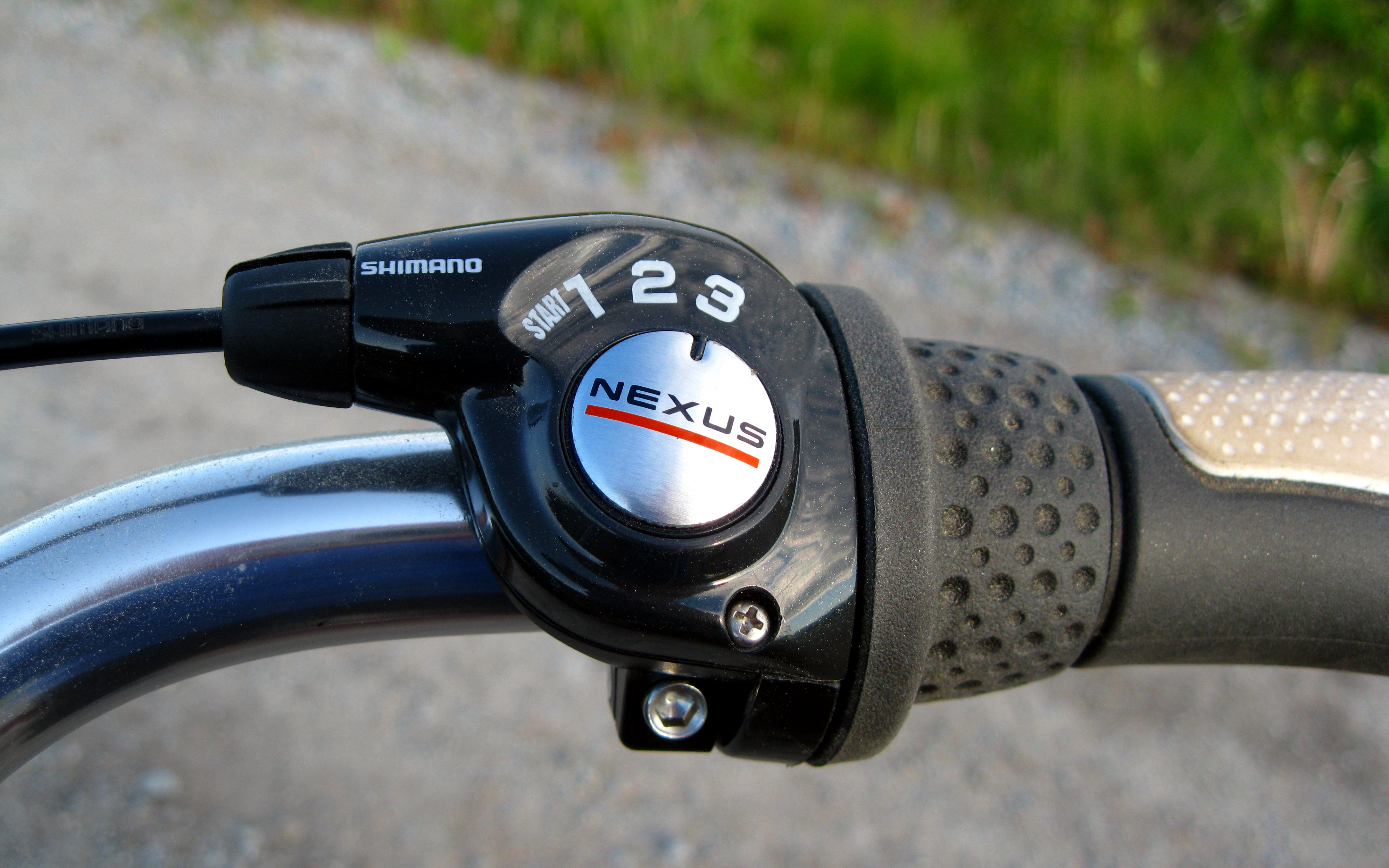
Lower gears make it simpler to bike uphill or start from a stop, minimizing pressure on your legs. Higher gears, on the other hand, give more power and speed on flat roads or downhill descents.
Shifting gears allows you to achieve the proper mix of effort and pace, minimizing discomfort and increasing your overall enjoyment of riding.
How Do Bike Gears Work?
Bike gears allow you to effortlessly travel a variety of terrains. Understanding how they work is essential for enhancing your riding experience. The drivetrain components play a major role in this process:
Crankset
Located at the front, the crankset operates with the pedals to transform your pedaling energy into forward movement. It has several chainrings of differing diameters, giving you options for steep climbs or cruising at high speeds on flat terrain.
Cassette
The cassette is a collection of cogs located on the back wheel that determines the gear ratios of your bike. It allows you to adjust your effort to varied terrains by providing lower gears for uphill trials and higher levels for fast descents and flat surfaces.
Chain
The chain connects the crankset and the cassette, ensuring that your pedaling energy is efficiently transferred to the wheels. Its precise build guarantees smooth transitions between gears, leading to a comfortable and efficient ride.
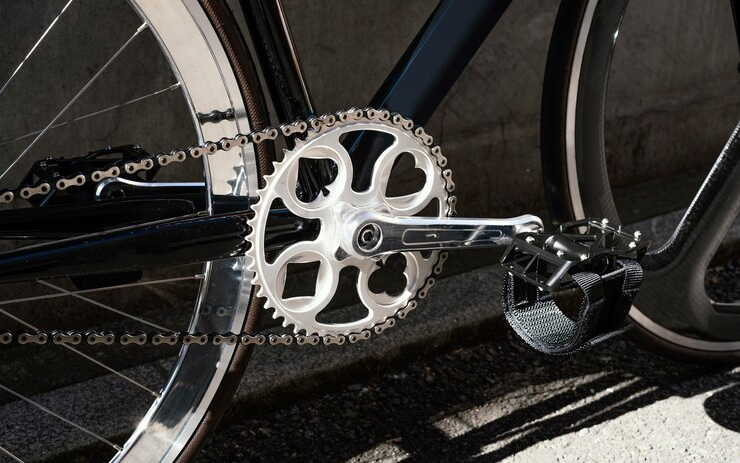
Derailleur
The derailleur system controls the movement of the chain between cogs or chainrings. It allows for accurate gear selection, enhancing your pedaling rhythm, and ensuring momentum on different road surfaces.
Shifters
They are mounted on the handlebars which give you control over the derailleurs, allowing for smooth gear changes. This function enables you to instantly respond to changing terrain, customizing your ride for convenience, efficiency, and peak performance.
What Is High-Low Gear?
On a bike, high and low gears relate to the different levels of resistance produced by the drivetrain, allowing riders to adapt their effort based on terrain and riding circumstances.
High Gear
The chain links with larger chainrings in the front and smaller cogs in the rear cassette while in high gear. The arrangement involves greater pedal effort, which produces greater acceleration with each rotation.

High gears are appropriate for flat or downhill sections since they allow cyclists to cover more distance with less pedaling effort.
Low Gear
The chain engages smaller chainrings in the front and larger gears in the rear cassette in low gear. This setup provides less resistance, making it simpler to pedal while generating less power.
Low gears are useful for climbing steep hills or negotiating difficult terrain because they allow riders to maintain a pleasant, steady tempo without putting pressure on their legs.
How Do You Use Gears on a Bike for Beginners?
A crucial skill that may considerably improve your cycling efficiency is learning how to change gears on a bike. Follow these strategies to fully understand gear shifting:
1. Analyze Terrain
Prepare for the terrain and modify your gears properly before approaching a rise or decline. To keep a steady rhythm, shift to a lower gear before rising and to a higher gear while approaching a downhill.

2. Use a Light Touch
When shifting gears, apply delicate and steady pressure. Avoid forcing on the shifters, as this might cause the chain to drop or skip gears.
3. Pedal Gently
Shift gears while softly pedaling, ideally during a short break in pedal pressure. This reduces tension on the chain and derailleurs, resulting in a smooth transition.
4. Avoid Cross-Chaining
Prevent cross-chaining by using the largest chainring with the largest rear gear and the smallest chainring with the smallest rear gear. This causes unnecessary wear and affects shifting performance by putting the chain at a sharp angle.
5. Adjust One Gear at a Time
Shifting one gear at a time allows the chain to transfer smoothly. Switching many gears at the same time might cause misalignment and other issues.
6. Maintain a Consistent Pace
Sustain a constant pedal tempo while shifting gears to meet your desired speed. Maintaining a consistent pace increases endurance and decreases tiredness.
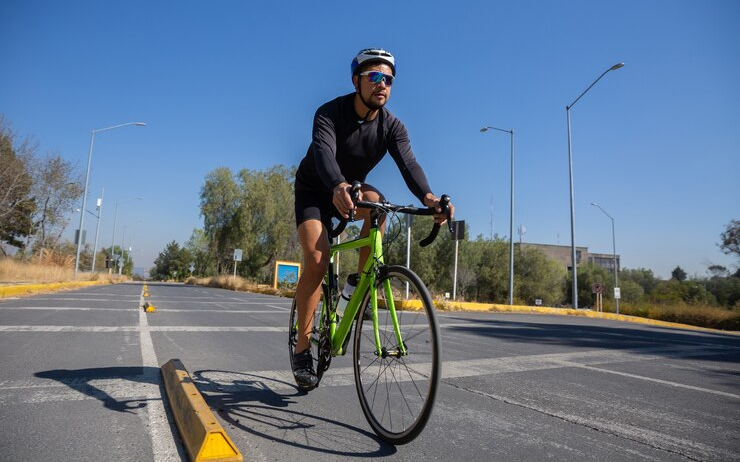
7. Practice
Before going on difficult routes, practice shifting gears in a controlled environment. Your confidence will grow as you get more familiar with your bike’s gear ratios and responsiveness.
8. Focus & Listen
Take note of the sound and feel of gear changes. Smooth and silent shifts are made by a well-tuned bike. Consider adjusting your derailleurs or getting specialist maintenance if you detect any unexpected noises or resistance.
Evaluate the path ahead and the obstacles you’ll encounter regularly. Prepare to swap gears as needed to optimize your pedaling effort for a comfortable and effective ride.
How to Use Different Gear Shifters?
Apart from learning how to use bike gear, bikers should be familiar with different types of gear shifters.
Thumb Shifter
The thumb shifter is an easy-to-use shifter that can be found on older bicycles. To shift gears, use your thumb to press the lever near the grips or brake levers. The smaller lever is for hard gear, the larger lever is for easy gear. It is beginner-friendly.

Combination Shifter
This shifter manages both front and back gears and is ideal for mountain bikes and hybrids. Push away for harder gears and pull for easier ones. The front gear control follows the same setup. It helps improve adaptability.
Twist Shifter
To change gears, you must twist the grip. These are common on mountain and hybrid bikes. Twist away from you for harder rear gear, and toward you for easier. Front gear shifts are controlled by the left twist grip. This shifter is quick and straightforward.
Integrated Shifter & Brake Lever
This mechanism is designed for road cyclists. It combines gear shifting with brakes. To swap gears, move the brake levers sideways. Rear gears utilize the right lever for harder and the left lever for easier. The handlebars are not released during the adjustment of gears, which makes them more simple.
Basic Drivetrain Maintenance
Follow these vital guidelines for keeping your bike’s drivetrain in top shape:
- Wipe off the chain, cassette, and chainrings to eliminate dirt and grime.
- Degrease the chain and components regularly.
- Apply lube for smoother movement and less friction.
- Monitor chain condition with a wear inspection tool and replace it as needed.
- Replace worn parts to ensure proper shifting and power transmission.
- Derailleurs should be fine-tuned for perfect shifting.
- To avoid damage, make sure all drivetrain bolts are tight.
- Adjust the B-tension screw to prevent chain slips.
- Schedule expert maintenance on a monthly schedule for thorough examinations and adjustments.
How to Change Gears on a Mountain Bike?
Learning how to use bike gears on a mountain bike is a skill that can enhance your cycling experience on a wide range of terrains. Assess the upcoming terrain changes and react accordingly to successfully change gears.
To guarantee seamless transitions, apply little pressure to the pedals during shifting and pedal softly throughout gear changes. To control the chainring and cassette, use both the front and back shifters.

Shift one gear at a time to preserve appropriate alignment, and eliminate cross-chaining to avoid extreme chain angles. Lower ratios should be used for uphill climbs to maintain a comfortable cadence, while higher gears should be used for descents and flat sections to enhance speed.
You can comfortably change gears on your mountain bike with experience, careful observation, and a steady touch, improving your cycling performance.
How to Use Bike Gears? Conclusion
Developing the skill of utilizing bike gears not only improves your ride but also gives you the confidence to face a variety of terrains. Your expertise in gear adjustment has a direct influence on your riding performance.
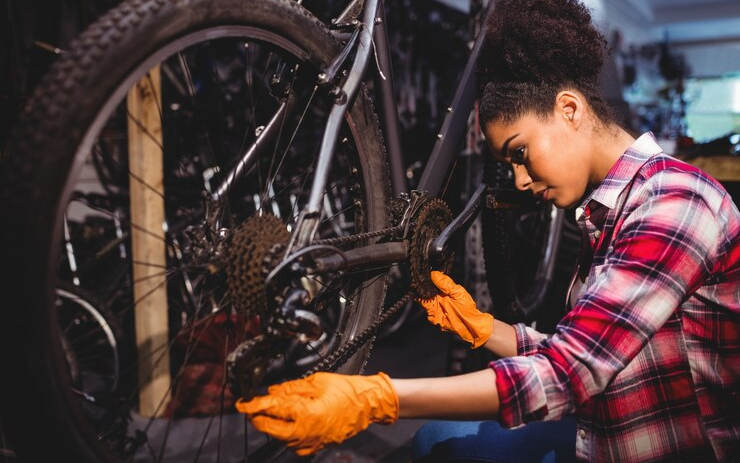
By choosing the optimum gear for the conditions and shifting effectively, you’ll improve your performance, save energy, and avoid unnecessary effort. As you continue on your bicycle adventure, keep in mind that your gear selection is essential for your expertise to overcome obstacles and enjoy the pleasures of riding.
Now, it’s time to go out and test your improved gear-shifting skills.
FAQs
Gear 1 is the lowest gear on a bike, and it is ideal for climbing, cycling on rough terrain, and riding slowly.
Gear cycles are adaptable for steep or rugged terrain, whereas gearless cycles are easier to use and require less maintenance on flat ground.
Yes, you can ride a bicycle in first gear, it’s better for starting and climbing hills. Higher gears are preferable for flat terrain and speed.
A 7-speed bike can normally reach between 15 and 30 miles per hour. Speed entirely depends on the rider’s expertise and the kind of terrain.

